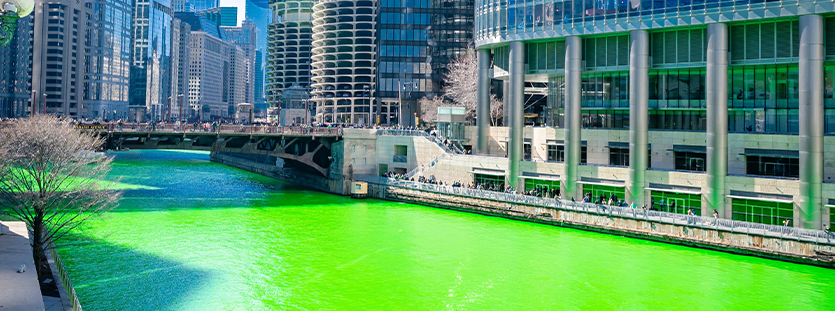St. Patrick’s Day is a feast day in celebration of St. Patrick, the patron saint of Ireland. Celebrated on 17th March, the anniversary of his death, he died in the 7th century. The celebration falls during Lent when traditionally, Irish families would attend church in the morning and then celebrate in the afternoon. Lenten prohibitions, such as eating meat, were waived, people would drink, dance and feast on bacon and cabbage.
St. Patrick was brought to Ireland at 16 as a slave. He later escaped only to return and is then credited with bringing Christianity to the Irish people, explaining the Holy Trinity using the three leaves of the Irish clover.
The History of St. Patrick’s Day
St Patrick’s day celebrations in Ireland started around the 10th century. However, the first St. Patrick’s Day parade was in The United States of America in 1601, in a Spanish colony with an Irish Vicar who was missing home. In 1772 Irish soldiers who were missing home marched in New York City to honour St. Patrick. From this, enthusiasm for the day only grew and Irish patriotism flourished.
In 1845, over 1 million Irish moved to America after the great hunger. In 1948 President Truman attended the New York City parade making the Irish Americans proud. They had to grapple with stereotypical ideas and racial prejudice for many years previously. Until 1970, it was law in Ireland for pubs to be closed on March 17th, but this changed in 1995 when the government created a national campaign to use St. Patrick’s Day to drive tourism and showcase Ireland and Irish culture to the rest of the world.
The first official New York City St. Patrick’s Day parade was in 1848 and is the oldest civilian parade in America, with over 150,000 participants. Every year over 3 million people line the streets of New York to watch the floats go past. It is 1.5 miles long and takes five hours to complete. Boston, Chicago, Philadelphia, and Savannah have their own parades with 10 – 20,000 participants.

Along with Chicago’s Parade, they also dye the river green. First done by accident in 1962, when 100 pounds of vegetable dye was dropped, in the river to locate illegal sewage discharges. The colour of the river remained green for days. Nowadays, only 40 pounds of dye are dropped into the river, and it lasts for several hours.
Celebrating St Patrick’s Day Today
St. Patrick’s Day is celebrated all over the world. Traditionally, people wear green coloured clothes, drink Guinness, and attend St. Patrick’s Day parades and parties, usually running long into the night. In 2022, Dublin’s annual St. Patrick’s Day parade will be back alongside, the 5k run and all the other festivities running from 16th March to 20th March.
Thinking of moving to Ireland? With a diverse culture and a rich history there is no better place to explore in 2022, from mountains and seaside towns to cities such as Dublin and Cork. Read our moving to Ireland free guide for all the need-to-know information.




